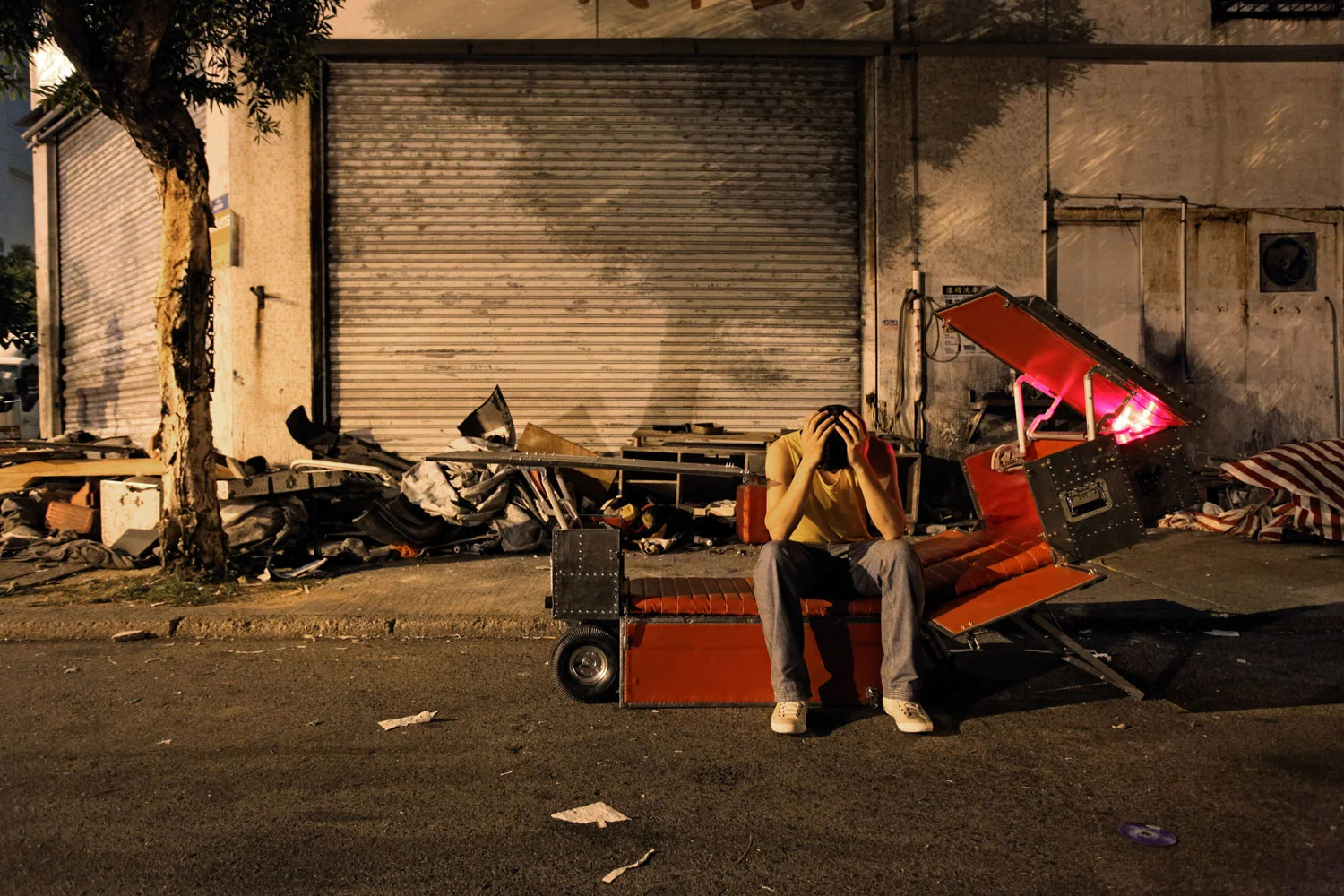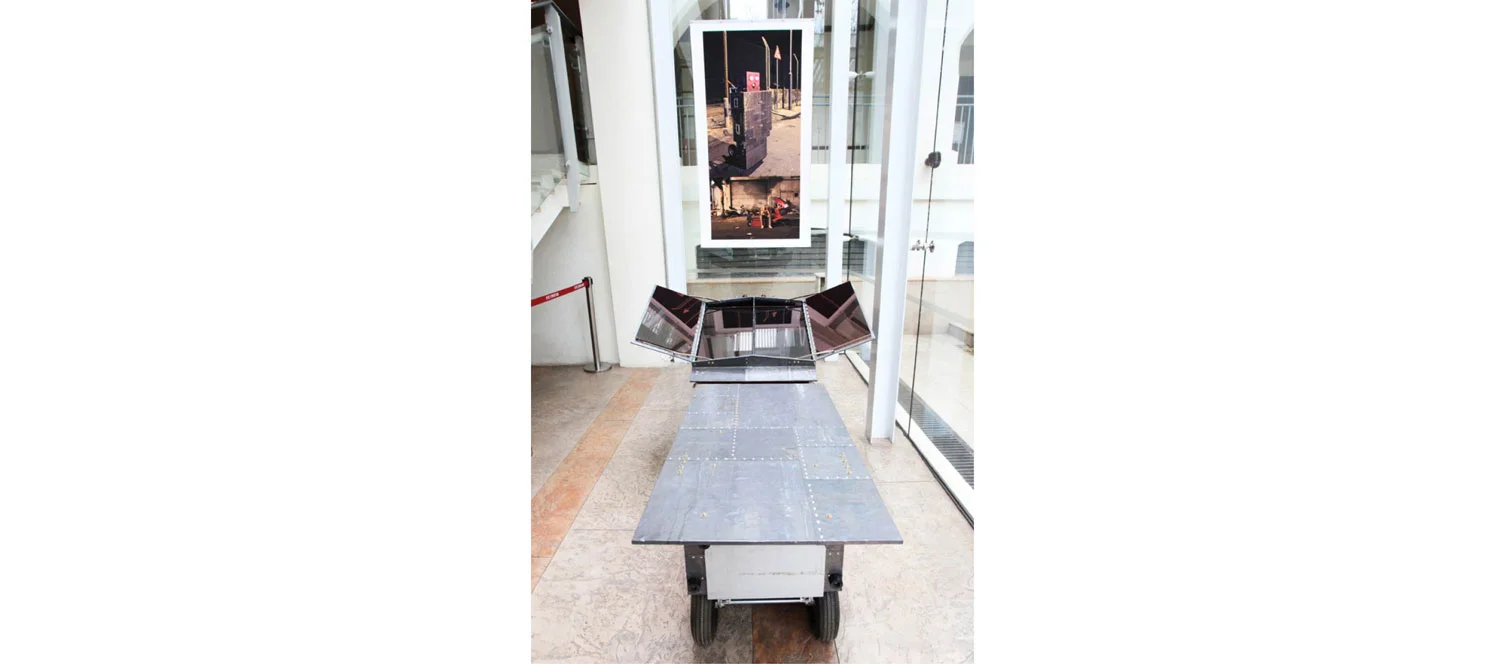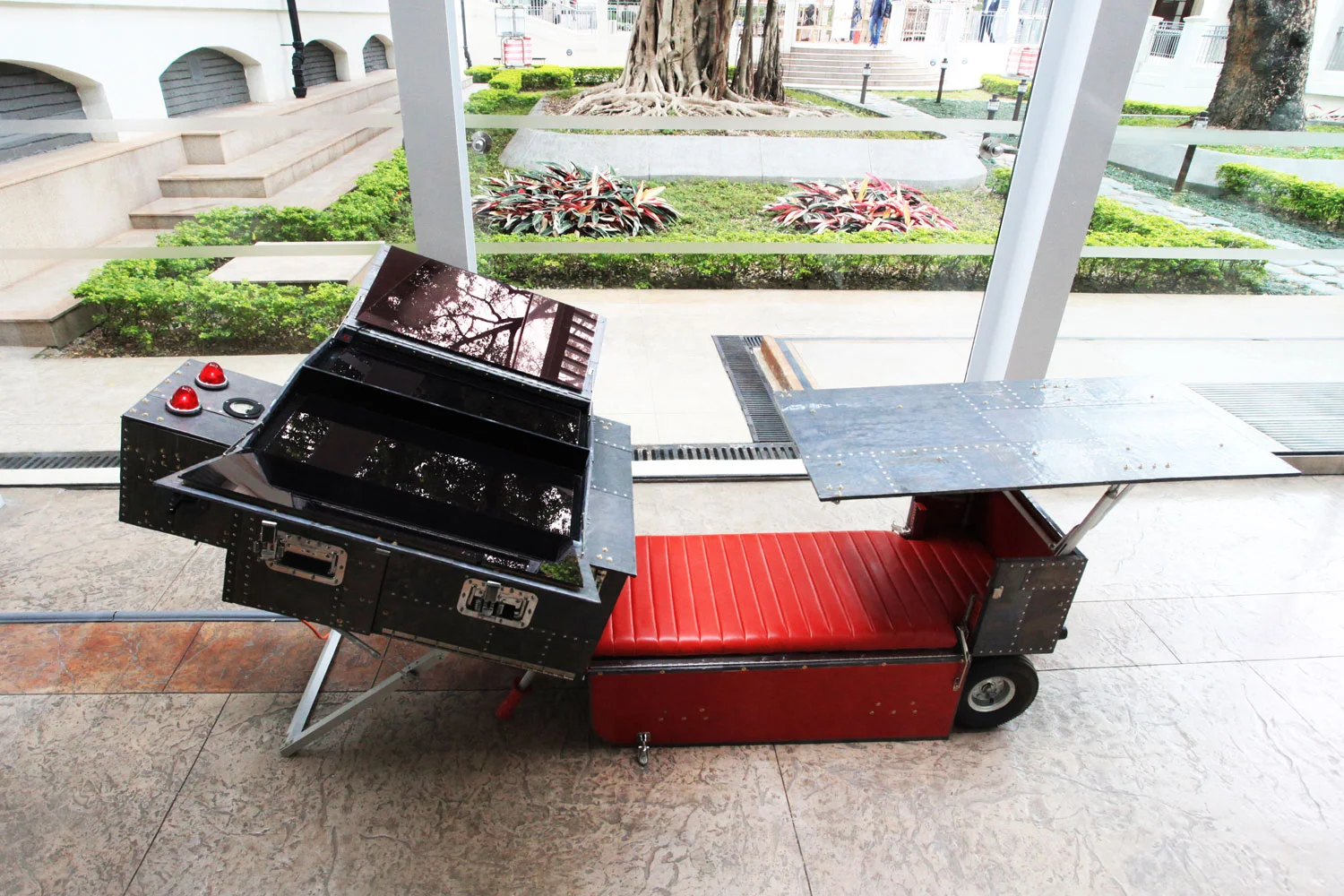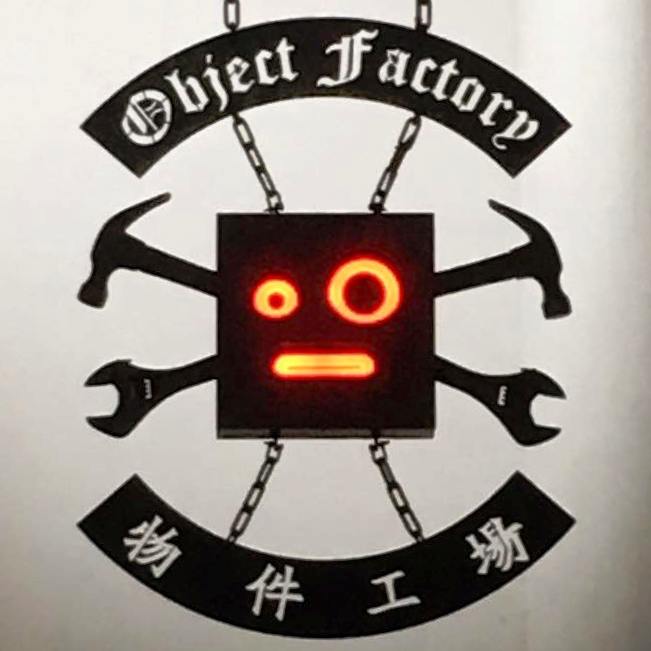Doomsday 末日號
Natural and man-made disasters killed tens of thousands of people and many more lost their home, Hong Kong being much closer to the Daya Bay Nuclear Power Station than to the Fukushima Nuclear Power Plant, maybe it is about time to reflect and address the potential risk and hazard produced by nuclear energy. Doomsday is an anti-nuclear radiation mobile living unit made of lead panels for one person, when lay flat on the ground the four solar panels could generate 15 volts of electricity for small electronic appliances. People often have blind faith towards the machine and think they could resolve all of nature’s problems. Unfortunately, this time our machines turned around and destroyed the most important life supplies in nature, polluting water, food, and the air.
Wood, lead, leather, solar panels, battery, lamps
230 cm(L) x 70cm(W) x 100cm (H)
2011





















